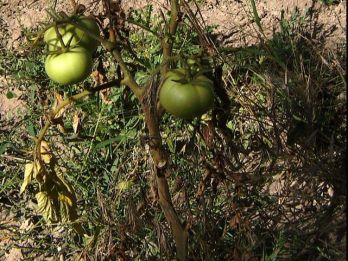Fusarium wilt of tomato
Fusarium wilt of tomato is caused by Fusarium oxysporum f.sp. lycopersici – a devastating disease in major tomato-growing regions.
Background
Fusarium wilt is a worldwide problem, reported in at least 32 countries.
Three races of the disease have been reported, based on their severity in affected tomato varieties. Race 1 was described in 1886, followed by race 2 in 1945, then race 3 in Australia in 1978.
It is found in several regions of Queensland, including the Shire Council of Bowen, Townsville City Council, Burdekin Shire Council, the Whitsunday region, and Isis Shire Council.
Tomato plants grown in the above areas cannot be brought into South Australia, and plants coming from other parts of Queensland must include proof of origin, per Condition 21 of the Plant Quarantine Standard (PQS).
Impacts
Fusarium wilt affects the productivity of tomato plants and may lead to death, but the fruit is still edible.
The disease is often caused by fungus associated with infected tomato material. The presence of root-knot nematode increases the chance of infection, even when the plant has some resistance to wilt.
Warm temperatures around 28°C, dry weather, and acidic soil are favourable conditions for wilt. Fast growing, juicy tomato plants exposed to fertilisation with ammonium nitrate are especially prone to the disease.
The fungus can spread by infected seed, transplants grown in infested soil, or via wind carrying diseased soil particles. The disease can live in soil for years without a host.
Management
It is important to regularly clean greenhouse structures, crates, benches, tools and flats to avoid contamination, and use sterilised soil if available.
Prevent the spread of contaminated soil into fields from equipment, training stakes, packing crates, and shoes.
Seedbeds or seedling production areas should be located away from infested fields. Areas where transplants are grown should be disinfected.
Identification
The symptoms include yellowing foliage, beginning with the lower leaves and working upward. This often begins on one side of the vine. Infected leaves later show downward curling, followed by browning and drying.
The top of the vine wilts during the day and recovers at night, but wilting becomes steadily worse until the entire vine is permanently affected. Brown veins can be seen in infected stems and large leaf stalks.
The degree of stunting increases over time as the plant roots are infected for longer.

